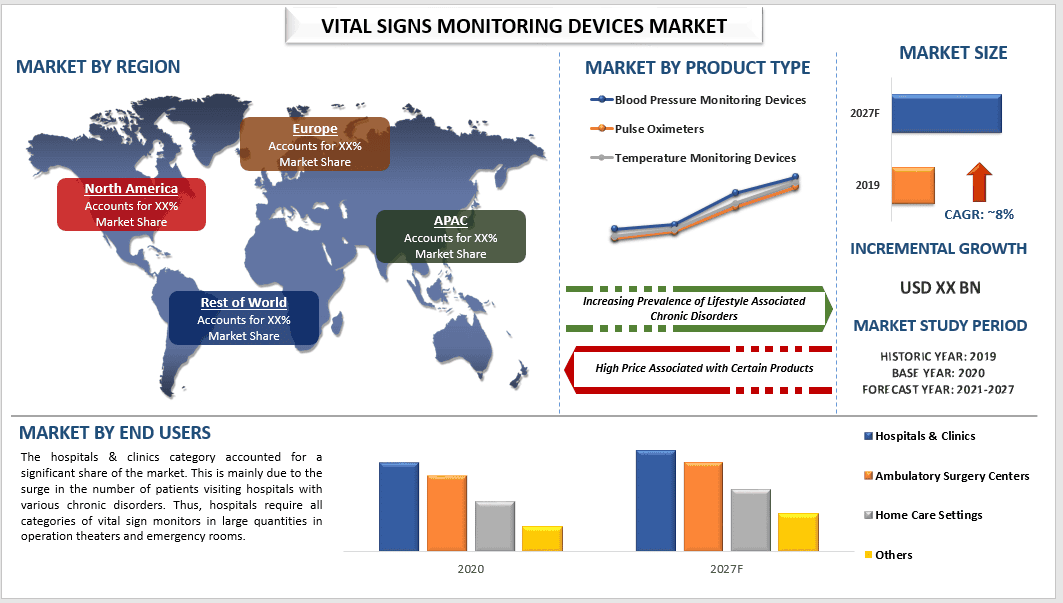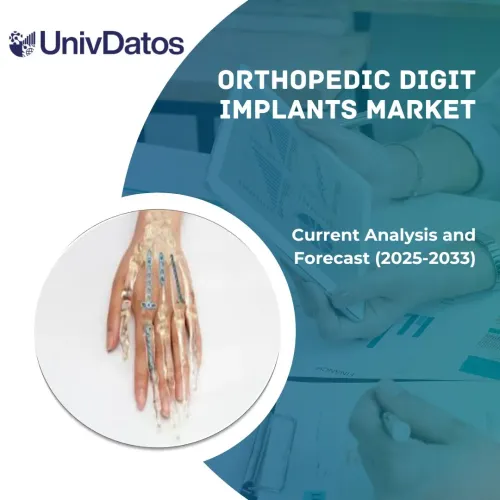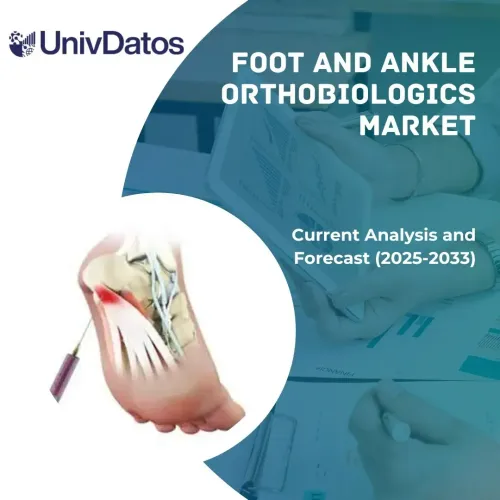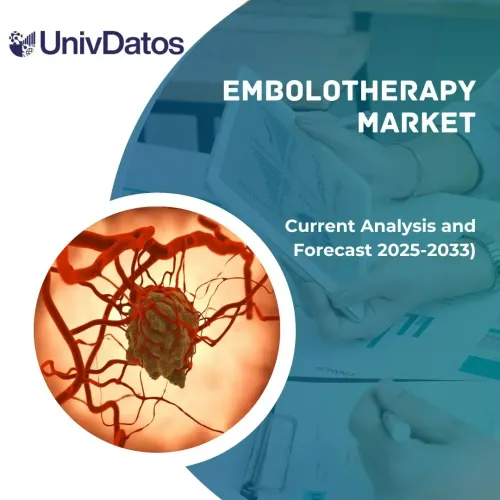- Strona główna
- O nas
- Branża
- Usługi
- Czytanie
- Kontakt
Rynek urządzeń do monitorowania parametrów życiowych: aktualna analiza i prognoza (2021-2027)
Nacisk na rodzaj produktu (urządzenia do monitorowania ciśnienia krwi, pulsoksymetry i urządzenia do monitorowania temperatury); użytkownik końcowy (szpitale i kliniki, ambulatoryjne centra chirurgiczne, placówki opieki domowej, inne); oraz region/kraj

Oczekuje się, że globalny rynek urządzeń do monitorowania parametrów życiowych odnotuje CAGR na poziomie około 8% w okresie 2021-2027. Wynika to głównie ze wzrostu rozpowszechnienia chorób przewlekłych, wzrostu świadomości na temat przenośnych i inteligentnych urządzeń do monitorowania parametrów życiowych oraz spersonalizowanej i dokładnej technologii monitorowania saturacji tlenem. Ponadto urządzenia do monitorowania parametrów życiowych obejmują pomiar tętna, częstości oddechu, temperatury i ciśnienia krwi w celu oceny fizycznego funkcjonowania organizmu. Ponadto urządzenie rejestruje dane medyczne pacjenta i przesyła je do szpitalnej dokumentacji medycznej, poprawiając w ten sposób leczenie pacjenta i zmniejszając liczbę błędów. Na przykład w marcu 2022 roku Agencja ds. Żywności i Leków (Food and Drug Administration) wydała firmie Biobeat pozwolenie 510(k) na zdalne urządzenie do monitorowania pacjentów w celu monitorowania częstości oddechu i temperatury ciała, a także bezmankietowego ciśnienia krwi, saturacji krwi tlenem i tętna. Rosnący wskaźnik zaburzeń przewlekłych, takich jak choroby układu oddechowego, nadciśnienie i inne, przyczynia się do wzrostu rynku. Ponadto oczekuje się, że różne czynniki, takie jak rosnące nakłady na badania i rozwój, również będą napędzać popyt na urządzenia do monitorowania parametrów życiowych w okresie prognozy.
Contec Medical Systems Co., Ltd, GE Healthcare, Halma plc, Masimo Corporation, Medtronic plc, Shenzhen Mindray Bio-Medical Electronics Co., Ltd., Nihon Kohden Corporation, A&D Company, Limited, Omron Healthcare, Inc., Koninklijke Philips N.V. Kilka fuzji i przejęć wraz z partnerstwami zostało podjętych przez tych graczy, aby ułatwić klientom dostęp do zaawansowanych technologicznie i innowacyjnych produktów/technologii.
Informacje przedstawione w raporcie
„Wśród rodzajów produktów kategoria urządzeń do monitorowania ciśnienia krwi stanowiła znaczący udział w rynku w 2020 r.”
Na podstawie rodzaju produktu rynek dzieli się na urządzenia do monitorowania ciśnienia krwi, pulsoksymetry i urządzenia do monitorowania temperatury. Wśród nich kategoria urządzeń do monitorowania ciśnienia krwi stanowiła znaczną część rynku. Wzrost tego segmentu przypisuje się wzrostowi liczby osób z zaburzeniami sercowo-naczyniowymi, ponieważ wymagają one regularnego monitorowania tętna. Na przykład, według centrów kontroli i zapobiegania chorobom, 1 na 4 zgony w Stanach Zjednoczonych jest spowodowany chorobami sercowo-naczyniowymi. Ponadto Amerykańskie Towarzystwo Kardiologiczne przewiduje, że do 2035 roku ponad 130 milionów dorosłych Amerykanów będzie cierpieć na jakąś chorobę serca. Oczekuje się, że spowoduje to dalszy wzrost popytu na samoobsługowe cyfrowe monitory ciśnienia krwi.
„Oczekuje się, że wśród użytkowników końcowych szpitale i kliniki odnotują znaczny CAGR w okresie prognozy”
Na podstawie użytkownika końcowego rynek dzieli się na szpitale i kliniki, ambulatoryjne centra chirurgiczne, placówki opieki domowej i inne. Wśród nich oczekuje się, że szpitale i kliniki odnotują znaczny CAGR w okresie prognozy. W szpitalach asystenci pielęgniarscy lub technicy są odpowiedzialni za zbieranie parametrów życiowych pacjentów i monitorowanie ciśnienia krwi, tętna i częstości oddechu w regularnych odstępach czasu. Na przykład w 2019 r., według NCBI, około 5,7 miliona pacjentów jest przyjmowanych na OIOM każdego roku w USA, co wymaga ciągłego monitorowania różnych parametrów życiowych. Monitory parametrów życiowych minimalizują w ten sposób prawdopodobieństwo błędów, co przekłada się na bezpieczniejszą opiekę nad pacjentem.
„Oczekuje się, że Ameryka Północna odnotuje znaczny wzrost w okresie prognozy”
Oczekuje się, że Ameryka Północna odnotuje znaczny CAGR w okresie prognozy ze względu na większe wdrożenie cyfrowej opieki zdrowotnej w kraju i rosnące inwestycje firm, a także wzrost rozpowszechnienia chorób sercowo-naczyniowych i inne. Na przykład, według statystyk Centrum Kontroli i Zapobiegania Chorobom zaktualizowanych w lutym 2022 r., w Stanach Zjednoczonych choroby serca są główną przyczyną umieralności mężczyzn, kobiet i osób większości grup rasowych i etnicznych. Ponadto rosnące wdrażanie nowoczesnych technologii i ulepszona infrastruktura opieki zdrowotnej, duża siła nabywcza i sprawiedliwe ramy zwrotu kosztów to niektóre z kluczowych czynników przyczyniających się do wzrostu rynku. Ponadto wiele firm zajmujących się opieką zdrowotną i urządzeniami do monitorowania parametrów życiowych ma siedzibę w regionie, który koncentruje się na nowych urządzeniach do monitorowania parametrów życiowych w leczeniu chorób.
Powody, dla których warto kupić ten raport:
- Badanie obejmuje analizę wielkości rynku i prognozowania zweryfikowaną przez uwierzytelnionych kluczowych ekspertów branżowych.
- Raport przedstawia szybki przegląd ogólnych wyników branży na pierwszy rzut oka.
- Raport obejmuje dogłębną analizę wybitnych firm z branży, z głównym naciskiem na kluczowe dane finansowe przedsiębiorstw, portfele produktów, strategie ekspansji i najnowsze wydarzenia.
- Szczegółowe badanie czynników napędzających, ograniczeń, kluczowych trendów i możliwości występujących w branży.
- Badanie kompleksowo obejmuje rynek w różnych segmentach.
- Dogłębna analiza branży na poziomie regionalnym.
Opcje dostosowywania:
Globalny rynek urządzeń do monitorowania parametrów życiowych można dodatkowo dostosować zgodnie z wymaganiami lub dowolnym innym segmentem rynku. Poza tym UMI rozumie, że możesz mieć własne potrzeby biznesowe, dlatego skontaktuj się z nami, aby otrzymać raport, który w pełni odpowiada Twoim wymaganiom.
Spis treści
Metodologia badań dla globalnej analizy rynku urządzeń do monitorowania funkcji życiowych (2021-2027)
Analiza historycznego rynku, szacowanie obecnego rynku i prognozowanie przyszłego rynku globalnego rynku urządzeń do monitorowania funkcji życiowych były trzema głównymi krokami podjętymi w celu stworzenia i analizy adopcji urządzeń do monitorowania funkcji życiowych w głównych regionach na całym świecie. Przeprowadzono wyczerpujące badania wtórne w celu zebrania danych historycznych dotyczących rynku i oszacowania obecnej wielkości rynku. Po drugie, w celu zatwierdzenia tych spostrzeżeń wzięto pod uwagę liczne ustalenia i założenia. Ponadto przeprowadzono również wyczerpujące wywiady pierwotne z ekspertami branżowymi w całym łańcuchu wartości globalnego rynku urządzeń do monitorowania funkcji życiowych. Po założeniu i zatwierdzeniu danych rynkowych poprzez wywiady pierwotne zastosowaliśmy podejście odgórne/oddolne do prognozowania całkowitej wielkości rynku. Następnie przyjęto metody podziału rynku i triangulacji danych w celu oszacowania i analizy wielkości rynku segmentów i podsegmentów, których dotyczy branża. Szczegółowa metodologia została wyjaśniona poniżej:
Uzyskaj więcej szczegółów na temat metodologii badań
Analiza historycznej wielkości rynku
Krok 1: Dogłębne badanie źródeł wtórnych:
Przeprowadzono szczegółowe badanie wtórne w celu uzyskania danych historycznych dotyczących wielkości rynku urządzeń do monitorowania funkcji życiowych z wewnętrznych źródeł firmy, takich jak raporty roczne i sprawozdania finansowe, prezentacje wyników, komunikaty prasowe itp. oraz źródeł zewnętrznych, w tym czasopisma, wiadomości i artykuły, publikacje rządowe, publikacje konkurencji, raporty sektorowe, bazy danych stron trzecich i inne wiarygodne publikacje.
Krok 2: Segmentacja rynku:
Po uzyskaniu danych historycznych dotyczących wielkości rynku urządzeń do monitorowania funkcji życiowych przeprowadziliśmy szczegółową analizę wtórną w celu zebrania danych historycznych dotyczących rynku i udziału dla różnych segmentów i podsegmentów w głównych regionach. Główne segmenty zawarte w raporcie to rodzaj produktu, użytkownik końcowy i region. Przeprowadzono dalsze analizy na poziomie krajów w celu oceny ogólnego wskaźnika adopcji w danym regionie.
Krok 3: Analiza czynnikowa:
Po uzyskaniu danych historycznych dotyczących wielkości rynku dla różnych segmentów i podsegmentów przeprowadziliśmy szczegółową analizę czynnikową w celu oszacowania obecnej wielkości rynku urządzeń do monitorowania funkcji życiowych. Ponadto przeprowadziliśmy analizę czynnikową z wykorzystaniem zmiennych zależnych i niezależnych, takich jak rosnąca liczba przypadków monitoringu domowego wraz ze wzrostem wskaźnika zachorowalności na choroby przewlekłe. Przeprowadzono dogłębną analizę scenariuszy popytu i podaży, biorąc pod uwagę najważniejsze partnerstwa, fuzje i przejęcia, ekspansję działalności i wprowadzenie produktów na rynek w sektorze urządzeń do monitorowania funkcji życiowych na całym świecie.
Szacowanie i prognozowanie obecnej wielkości rynku
Określenie obecnej wielkości rynku: Na podstawie praktycznych spostrzeżeń z powyższych 3 kroków ustaliliśmy obecną wielkość rynku, kluczowych graczy na globalnym rynku urządzeń do monitorowania funkcji życiowych oraz udziały w rynku segmentów. Wszystkie wymagane udziały procentowe, podziały i rozkłady rynku zostały określone przy użyciu wyżej wymienionego podejścia wtórnego i zostały zweryfikowane poprzez wywiady pierwotne.
Szacowanie i prognozowanie: Do szacowania i prognozowania rynku przypisano wagi różnym czynnikom, w tym czynnikom napędzającym i trendom, ograniczeniom i możliwościom dostępnym dla interesariuszy. Po przeanalizowaniu tych czynników zastosowano odpowiednie techniki prognozowania, tj. podejście odgórne/oddolne, aby dojść do prognozy rynkowej na rok 2027 dla różnych segmentów i podsegmentów na głównych rynkach na całym świecie. Metodologia badań przyjęta do oszacowania wielkości rynku obejmuje:
- Wielkość rynku branży, pod względem przychodów (USD) i wskaźnika adopcji rynku urządzeń do monitorowania funkcji życiowych na głównych rynkach krajowych
- Wszystkie udziały procentowe, podziały i rozkłady segmentów i podsegmentów rynku
- Kluczowi gracze na globalnym rynku urządzeń do monitorowania funkcji życiowych pod względem oferowanych rozwiązań. Ponadto strategie rozwoju przyjęte przez tych graczy, aby konkurować na szybko rozwijającym się rynku
Walidacja wielkości rynku i udziału
Badania pierwotne: Przeprowadzono dogłębne wywiady z kluczowymi liderami opinii (Key Opinion Leaders – KOL), w tym kadrą kierowniczą wyższego szczebla (CXO/VP, dyrektor ds. sprzedaży, dyrektor ds. marketingu, dyrektor operacyjny, dyrektor regionalny, dyrektor krajowy itp.) w głównych regionach. Następnie podsumowano wyniki badań pierwotnych i przeprowadzono analizę statystyczną w celu udowodnienia postawionej hipotezy. Dane wejściowe z badań pierwotnych zostały skonsolidowane z wynikami badań wtórnych, przekształcając w ten sposób informacje w praktyczne spostrzeżenia.
Podział uczestników pierwotnych w różnych regionach

Inżynieria rynku
Zastosowano technikę triangulacji danych w celu ukończenia ogólnego szacowania rynku i uzyskania precyzyjnych danych statystycznych dla każdego segmentu i podsegmentu globalnego rynku urządzeń do monitorowania funkcji życiowych. Dane zostały podzielone na kilka segmentów i podsegmentów po przestudiowaniu różnych parametrów i trendów w obszarach rodzaju produktu, użytkownika końcowego i regionu na globalnym rynku urządzeń do monitorowania funkcji życiowych.
Główny cel badania globalnego rynku urządzeń do monitorowania funkcji życiowych
W badaniu wskazano obecne i przyszłe trendy rynkowe na globalnym rynku urządzeń do monitorowania funkcji życiowych. Inwestorzy mogą uzyskać strategiczne spostrzeżenia, na których mogą opierać swoje decyzje dotyczące inwestycji w oparciu o analizę jakościową i ilościową przeprowadzoną w badaniu. Obecne i przyszłe trendy rynkowe określiły ogólną atrakcyjność rynku na poziomie regionalnym, zapewniając uczestnikom przemysłu platformę do wykorzystania niewykorzystanego rynku w celu skorzystania z przewagi pioniera. Inne cele ilościowe badań obejmują:
- Analiza obecnej i prognozowanej wielkości rynku urządzeń do monitorowania funkcji życiowych pod względem wartości (USD). Ponadto analiza obecnej i prognozowanej wielkości rynku różnych segmentów i podsegmentów
- Segmenty w badaniu obejmują obszary rodzaju produktu, użytkownika końcowego i regionu.
- Definiowanie i analiza ram regulacyjnych dla branży urządzeń do monitorowania funkcji życiowych.
- Analiza łańcucha wartości związanego z obecnością różnych pośredników, wraz z analizą zachowań klientów i konkurentów w branży.
- Analiza obecnej i prognozowanej wielkości rynku urządzeń do monitorowania funkcji życiowych dla głównego regionu.
- Główne kraje regionów badane w raporcie obejmują Amerykę Północną, Europę, region Azji i Pacyfiku oraz Resztę Świata.
- Profile firm działających na rynku urządzeń do monitorowania funkcji życiowych oraz strategie rozwoju przyjęte przez uczestników rynku w celu utrzymania się na szybko rozwijającym się rynku
- Dogłębna analiza branży na poziomie regionalnym
Powiązane Raporty
Klienci, którzy kupili ten przedmiot, kupili również










